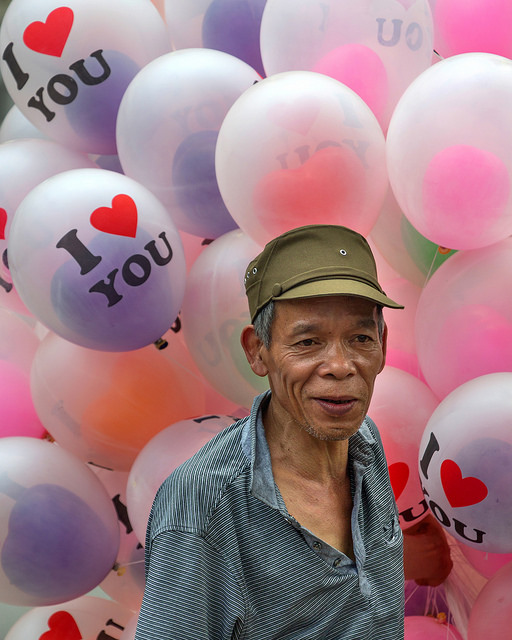“What is the best way to lead a meaningful life?” the Vietnamese student asked me.
Wow, I thought, that escalated quickly. His first two questions had been “Where are you from?” and “How do you like Vietnam?”
I’d only been in Hanoi for a couple of days. The night train to Sapa didn’t leave for hours, so I thought I’d hang out by Hoan Kiem Lake and read for a while. A few minutes after I sat down I was approached by Tung, a disarmingly earnest high school student who wanted to practice English. One by one more students joined until there were seven of us.
Tung followed his meaningful life question with, “Do you think it is better to be responsible or to remain childlike?”
I mumbled through an awkward, unsatisfying answer before turning the tables. “What do you think?”
“I think emotions are the most important thing. If you don’t have emotions, you are only a robot. Emotions are everything.”
Tung’s rapid-fire questions jumped randomly across topics. “How old are you?” “In America can you really buy guns at the supermarket?” “What do Americans think about Ho Chi Minh?” “How much does it cost to visit New York City?” “When you look back on your life, are there any decisions you wish you could change?”
One of the other students turned the conversation to politics. “Donald Trump bad. I no like him.”
Someone else disagreed. “Donald Trump good.”
“Why is Donald Trump good?” I asked.
“Because he know business. Business very important.”
“Where do you go after Hanoi?” asked Tung. I told him I was taking the train to Sapa soon, and that I was looking forward to seeing some Hmong friends I’d met when I visited before. Tung looked puzzled. “Hmong? What is Hmong?”
Other Vietnamese I’d talked to in Hanoi had been similarly confused when I mentioned the Hmong, and I assumed my pronunciation of the word was throwing them off. Surely people in Hanoi knew about the ethnic minorities who live relatively nearby.
“I from Sapa, I Hmong,” said a student who had been silent up to that point.
“Perfect!” I said. “Can you tell Tung about the Hmong?”
The two spoke in quick bursts of Vietnamese. Tung shook his head. “I do not know them,” he said.
I guess that shouldn’t be such a surprise. Maybe it’s like an American living in Phoenix who knows nothing about the Navajo. After a Newsweek study in 2011 found that 70% of Americans don’t know what the Constitution is, my confidence that I can predict what is and is not ‘common knowledge’ is pretty low.

The intensity of Hanoi made for a harsh transition from the relaxed pace of Luang Prabang. Sidewalks in downtown Hanoi are used as parking lots, dining rooms, and extensions of stores, so to walk somewhere you have to share the street with a dizzying rush of cars, trucks, scooters, and bikes. It’s a free-for-all, with virtually no traffic signals and nonstop honking. People honk to let you know they’re behind you, to say hello, to tell you to move, to let you know they’re about to pass, to express displeasure with something you’re doing, to say thank you, or to just honk for the sake of honking.
I thought some of the congestion might be related to the holiday. I’d arrived on Reunification Day (sometimes called Liberation Day), when Vietnam celebrates the capture of Saigon by the North Vietnamese in 1975. But apparently a lot of people living in Hanoi go back to their home villages on Reunification Day, so the city may have even been a little less hectic than usual. Overall Hanoi didn’t seem to have changed dramatically since my visit in 2010.

The night train pulled out of the station right on schedule. I shared a four-bed compartment with a friendly Vietnamese family and slept poorly, as expected. At 5:30 am the next morning we rolled into Lao Cai. Groggy but happy, I caught a shared minivan for the short ride up through the mountains to Sapa.
